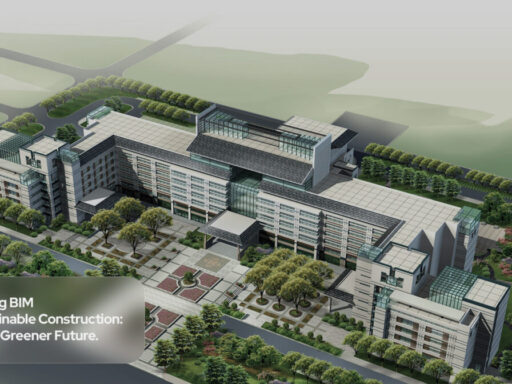Introduction
The AECO industry, consisting of architecture, engineering, construction, and operations, has evolved significantly by adopting Building Information Modeling (BIM). BIM encompasses policies, processes, and technologies for managing data and designs throughout a project’s lifecycle. This post delves into the synergies between BIM, AI, and machine learning, exploring their potential to revolutionize the AECO industry.
Highlights
-
The adoption of BIM in the AECO industry has facilitated the transition from disconnected architectural, structural, and infrastructure drawings to semantically rich information models, driving efficiency and collaboration.
-
BIM introduces a digital working environment that fosters collaboration and asset management throughout the lifecycle of projects.
-
Integrating AI and machine learning with BIM can optimize decision-making, design, risk mitigation, and operational efficiency in the AECO industry.
How AI Could Future-Proof Architecture
In the dynamic field of architectural design, embracing AI isn’t just beneficial—it’s imperative for staying competitive. AI tools facilitate collaboration among architects and designers, unlocking new levels of creativity and efficiency.
Architects can advance their careers by acquiring AI skills, recognizing the critical role of AI in shaping the future of architecture. By embracing technology, architects position themselves at the forefront of innovation, driving the evolution of architectural solutions.
“As an architect navigating the ever-evolving landscape of design, I’ve come to understand that embracing AI isn’t just about staying relevant—it’s about shaping the future.” – Matias Andreozzi, BIM Architect
The Power of Integrated Information Management
BIM revolutionizes operations in the AECO industry by providing a centralized platform for managing building information. It enables the creation of intelligent 3D models rich in data, enhancing decision-making throughout projects.
The adoption of BIM is driven by its ability to integrate disparate drawings, technical descriptions, and databases into a single information model, streamlining design processes and improving collaboration.
Unlocking Potential with AI and Machine Learning
While BIM has transformed the AECO industry, integrating it with AI and machine learning amplifies its impact. These technologies analyze large datasets, extracting valuable insights and patterns.
AI algorithms detect conflicts in 3D models during the design phase, mitigating risks before construction begins. Machine learning optimizes construction site layouts and accurately predicts project costs and timelines, empowering project managers to make informed decisions.
Challenges and Opportunities for Transformation
Challenges remain despite the promise of integrating BIM with AI and machine learning. Resistance to change and insufficient technology investments hinder progress. Standardizing data is crucial for effective AI and machine learning implementation.
However, collaboration among stakeholders presents exciting opportunities to overcome these challenges and harness the full potential of BIM, AI, and machine learning in the AECO industry.
Conclusion
Integrating BIM with AI and machine learning unlocks new possibilities for the AECO industry. By embracing these technologies, companies can optimize designs, mitigate risks, and enhance operational efficiency. The future of the AECO industry lies in the synergy between BIM, AI, and machine learning.






